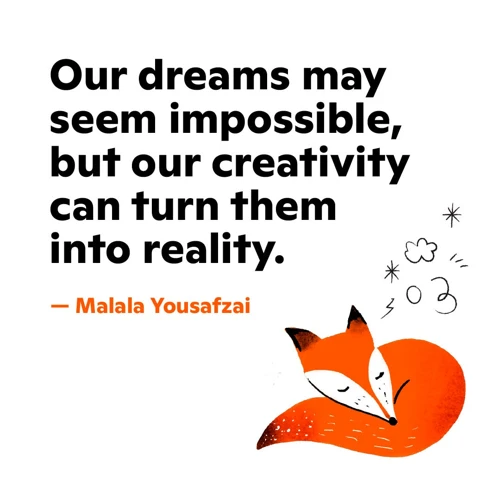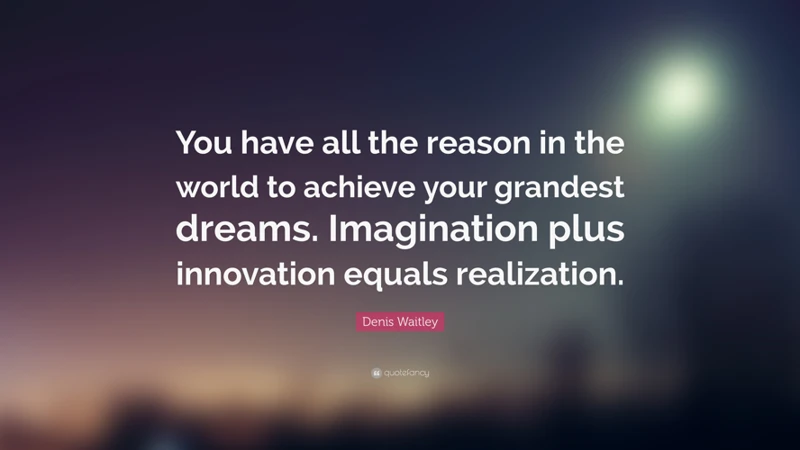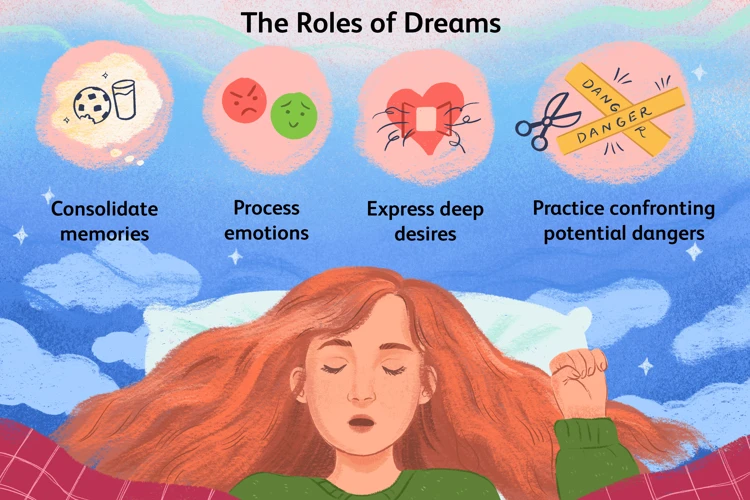Have you ever wondered where great ideas come from? How does innovation and invention occur? One possible answer lies within our own minds, specifically in our dreams. Dreams have long been recognized as a mysterious and enigmatic aspect of human existence. They can be vivid and fantastical, taking us to strange and unfamiliar places. But could our dreams also hold the key to unlocking our creativity and pushing the boundaries of innovation? In this article, we will explore the influence of dreams on innovation and invention, delving into the nature of dreams, their link to creativity, and the examples of famous inventors whose dreams have inspired groundbreaking discoveries. Get ready to dive into the world of dreams and discover their hidden potential for driving innovation!
Understanding Dreams

Understanding dreams is a complex endeavor, as they encompass a vast array of experiences and meanings. Dreams are a natural occurrence during sleep that involve a series of thoughts, images, and sensations that can often feel as vivid as real life. The Nature of Dreams varies from person to person, with some dreams being surreal and abstract, while others are more realistic and relatable. Dreams can incorporate elements from our everyday lives, as well as fantastical scenarios and symbols from our subconscious mind. They can transport us to different times and places, allowing us to experience a range of emotions and situations. Dream Interpretation is another aspect of understanding dreams, as individuals and cultures have developed various methods and theories over time. Some interpret dreams as messages from the divine or the subconscious, while others see them as reflections of our fears, desires, and unresolved issues. Carl Jung, a renowned psychologist, believed that dreams hold valuable insights into the unconscious mind and can provide guidance and self-discovery.
1. The Nature of Dreams
| The Nature of Dreams |
| Dreams come in various forms and can take us on incredible journeys within our unconscious mind. They often defy the laws of reality, allowing us to experience things that would be impossible in the waking world. Dreams can be vivid and filled with sensory details, immersing us in a complete sensory experience. They may involve familiar or unfamiliar people, places, and scenarios, creating a unique tapestry of imagery. Dreams can evoke a wide range of emotions, from joy and excitement to fear and anxiety. They can also involve symbols and metaphors that represent deeper meanings and subconscious desires. While dreams are typically associated with sleep, they can occur during other states of consciousness, such as daydreaming or meditation. |
2. Dream Interpretation
Dream interpretation is a fascinating field that seeks to unravel the hidden meanings and symbolic messages within our dreams. It is a way for individuals to make sense of their dreams and gain insights into their innermost thoughts and emotions. Many different theories and approaches have been developed to interpret dreams, ranging from Freudian psychoanalysis to more contemporary methods. Sigmund Freud, the father of psychoanalysis, believed that dreams were a reflection of repressed desires and unconscious conflicts. He believed that by analyzing the symbols and imagery in dreams, we could uncover hidden messages from our subconscious. On the other hand, Carl Jung, a prominent Swiss psychologist, introduced the concept of the collective unconscious, suggesting that dreams contain archetypal symbols that are shared across cultures and have universal meanings.
Modern dream interpretation approaches often focus on personal symbolism and subjective meanings. Some individuals engage in dream journaling, in which they record their dreams upon waking in order to reference them later for analysis and understanding. This practice can help uncover recurring themes, patterns, and symbols in dreams, providing valuable insight into one’s unconscious mind. Dream journaling can be a helpful tool for personal growth and self-reflection, as it allows individuals to explore the depths of their psyche and uncover aspects of themselves that may be hidden or unacknowledged.
While dream interpretation is not an exact science, it can be a powerful tool for self-discovery and personal development. It offers a way to tap into the rich symbolism and imagery that our dreams present, allowing us to gain a deeper understanding of ourselves and our subconscious motivations. By interpreting our dreams, we can unlock hidden messages that can provide guidance, inspiration, and healing. So, the next time you wake up from a vivid or intriguing dream, consider taking a moment to reflect on its meaning and explore the depths of your own inner world.
The Link between Dreams and Creativity

is a fascinating and intricate connection that has captivated thinkers and innovators throughout history. Dreams have long been recognized as a source of inspiration and a catalyst for inventive thinking. When we dream, our minds have the freedom to explore beyond the limitations of our waking world. In the realm of dreams, boundaries and expectations are dissolved, allowing for the formation of new and innovative ideas. The subconscious mind, unleashed during sleep, can make unique connections and associations that may not occur to us in our conscious state. These connections can spark creative insights and breakthroughs when we awaken. Dreams as a Source of Inspiration can provide a wellspring of fresh and unconventional ideas. Artists, writers, and inventors have often drawn inspiration from the bizarre and fantastical scenarios that unfold in their dreams. For example, Salvador Dali, the surrealist artist, used his dreams as a source of inspiration for his unique and iconic artworks. Similarly, Mary Shelley’s dream about a scientific experiment gone wrong gave birth to the famous novel “Frankenstein.”
1. Dreams as a Source of Inspiration
Dreams have the power to ignite our imagination and serve as a rich source of inspiration. They can provide us with unique and unconventional ideas that we may not have considered in our waking life. tap into the depths of our subconscious mind, where creativity and innovation thrive. In dreams, we often encounter vivid and vividly surreal scenarios that allow us to explore new possibilities and perspectives. These dreamscapes can break free from the constraints of reality, opening up a world of endless potential. It is not uncommon for artists, writers, and inventors to seek inspiration from their dreams, as they offer a wellspring of originality and novelty. Dream-inspired ideas have the capacity to challenge existing norms and push the boundaries of what is believed to be possible. By embracing the messages and symbols embedded in our dreams, we can access hidden reservoirs of creativity and find innovative solutions to problems that we may have been struggling with. The key lies in recognizing the significance of our dreams and harnessing their inspirational power to fuel our creative endeavors.
2. How Dreams Drive Inventive Thinking
Dreams have a unique ability to stimulate inventive thinking and foster breakthrough ideas. When we dream, our minds are free from the constraints of reality and logic. We are able to explore unconventional connections, challenge existing norms, and generate novel concepts. In dreams, our subconscious mind takes center stage, allowing us to tap into hidden thoughts, emotions, and memories. This uninhibited state of mind often leads to the creation of innovative solutions to problems that may have seemed insurmountable during waking hours.
During dream states, our brain consolidates and processes information accumulated throughout the day, making connections between seemingly unrelated concepts and experiences. Researchers have found that dreams can increase creativity by facilitating associative thinking, wherein previously unrelated ideas merge to form unique and inventive solutions. Dream-inspired ideas often arise from symbolic or metaphorical representations that can ignite new ways of thinking and spark the imagination.
Evidence from various studies, including the research of neuroscientist Sara Mednick, suggests that dreams enhance our cognitive flexibility and enable us to approach problems from different perspectives. Dreams can break free from the limitations imposed by logic, leading to unconventional and original insights. By embracing the imaginative and unstructured nature of dreams, individuals can tap into their creative potential and harness the power of inventive thinking.
By unlocking the hidden messages and symbols within dreams, individuals may discover innovative ideas that can shape the course of their work and creative endeavors. Exploring dreams for their creative potential offers a window into the depths of the subconscious mind, where new possibilities and solutions reside. Whether consciously or unconsciously, dreams have the ability to drive inventive thinking and propel individuals towards groundbreaking discoveries.
To learn more about unlocking the hidden potential of dreams for creativity, check out our article on unlocking hidden messages in dreams.
Examples of Dreams Inspiring Innovation

Dreams have a remarkable history of inspiring innovation and groundbreaking inventions. Here are some :
- Nikola Tesla’s Dream of an Alternating Current: In the late 19th century, Tesla had a vivid dream depicting a rotating magnetic field, which led to his invention of the induction motor and the development of alternating current (AC) power systems that revolutionized the transmission of electricity.
- Elias Howe’s Dream of a Sewing Machine: Howe, the inventor of the sewing machine, struggled with the design of a functional needle. Legend has it that he had a dream in which he was held captive by a group of natives who brandished spears with holes in the tips. This dream inspired Howe to create the concept of a needle with an eye at the pointed end, ultimately improving the functionality of sewing machines.
- Dmitri Mendeleev’s Dream of the Periodic Table: Mendeleev, a Russian chemist, was struggling to organize the elements in a logical manner. One night, he had a dream where he saw all the elements arranged in a table, complete with their properties and atomic weights. This dream guided Mendeleev in constructing the periodic table, a foundational tool in the field of chemistry.
These are just a few examples of how dreams, with their mysterious and symbolic nature, have sparked the imagination and inspired inventors throughout history. They serve as a reminder of the tremendous creative potential that lies within the realm of dreams. If you want to explore the creative power of your own dreams, consider keeping a dream journal to uncover hidden insights and connections.
1. Nikola Tesla’s Dream of an Alternating Current
Nikola Tesla, a renowned inventor and electrical engineer, had a dream that played a pivotal role in the development of alternating current (AC) systems. In his dream, Tesla envisioned a motor that operated on a rotating magnetic field, a concept that had eluded him for years. This breakthrough led to the invention of the induction motor and the realization that alternating current could be harnessed and transmitted efficiently over long distances. This dream served as a turning point in Tesla’s career, as it led him to pursue the development of AC power systems, which revolutionized the way electricity is generated and distributed today. Tesla’s dream of an alternating current not only showcased the power of the subconscious mind but also demonstrated how dreams can spark innovation and open new horizons in scientific and technological advancement.
2. Elias Howe’s Dream of a Sewing Machine
Elias Howe, an American inventor, is widely known for his dream that led to the invention of the sewing machine. In the mid-19th century, Howe was struggling to find a solution to a key problem in sewing machine design – the precise and efficient movement of the needle.
In his dream, Howe found himself in a dire situation where he was captured by a group of natives who planned to kill him. As they prepared for his execution, Howe noticed that their spears had small holes near the tips. This observation sparked a revelation: the hole at the tip of the spear could guide the thread, just like a needle. He realized that shaping the needle in a similar way could revolutionize sewing machine design.
Upon waking up, Howe rushed to his workshop to turn his dream-inspired idea into reality. He tirelessly worked on refining the design, eventually creating a sewing machine with a needle that moved in a reciprocating motion through the fabric. This invention significantly increased the speed and efficiency of sewing, revolutionizing the textile industry.
Howe’s dream serves as a perfect example of how dreams can provide innovative solutions to complex problems. By tapping into the deeper recesses of the mind, dreams can offer unique insights and ignite the creative spark needed for groundbreaking inventions.
3. Dmitri Mendeleev’s Dream of the Periodic Table
In the realm of scientific innovation, dreams have played a significant role in inspiring groundbreaking discoveries. One notable example is Dmitri Mendeleev’s Dream of the Periodic Table. Dmitri Mendeleev, a Russian chemist, struggled to organize the known elements into a coherent system. According to his own account, he was on the verge of despair when he fell into a deep sleep. During this slumber, he experienced a vivid dream where he saw the elements arranged in rows and columns, forming a cohesive pattern. When he woke up, Mendeleev hastily wrote down the vision he saw in his dream. This vision ultimately served as the basis for what would become the Periodic Table of Elements, a vital tool in understanding and categorizing the elements. Mendeleev’s dream-inspired revelation revolutionized the field of chemistry and has since become one of the fundamental pillars of scientific knowledge. It serves as a testament to the potential of dreams in sparking innovation and shaping our understanding of the world around us.
The Science Behind Dream Influence

The science behind dream influence is a fascinating field that seeks to unravel the mechanisms behind the connection between dreams and creativity. Brain Activation during Dreaming plays a crucial role in the influence of dreams on innovation. Studies have shown that certain regions of the brain, such as the prefrontal cortex and the limbic system, exhibit heightened activity during dreaming. This increased brain activity allows for the formation and processing of new connections and ideas. The Role of the Subconscious Mind is also significant in understanding dream influence. The subconscious mind is thought to be more active during sleep, and it often brings forth memories, emotions, and ideas that are not readily accessible during waking hours. This opens up possibilities for new insights and perspectives to arise. Memory Consolidation and Problem Solving in Dreams is another aspect of dream influence. Dreams have been shown to aid in memory consolidation and problem-solving processes, as sleep is essential for integrating information and enhancing cognitive functions. By exploring the science behind dream influence, we can gain a deeper understanding of how dreams can fuel innovation and foster creative thinking.
1. Brain Activation during Dreaming
- Increased Activation: Brain imaging studies have revealed that during dreaming, there is a significant increase in brain activity compared to normal waking states. This is particularly observed in the areas responsible for visual processing, such as the occipital lobe, and in the regions associated with emotions and memory, such as the amygdala and hippocampus.
- Rapid Eye Movement (REM) Sleep: Dreams primarily occur during the REM stage of sleep, characterized by rapid eye movements and increased brain activity. During REM sleep, the brain experiences heightened neurochemical activity, including the release of neurotransmitters like serotonin and acetylcholine, which play a crucial role in enhancing cognition and creativity.
- Integration of Neural Networks: Dreaming involves the integration of various neural networks in the brain, facilitating the formation of connections between ideas, memories, and emotions. This cross-activation of neural networks allows for the creation of novel associations and the synthesis of seemingly unrelated information, which can lead to innovative thinking and problem-solving.
These findings highlight the dynamic and complex nature of brain activation during dreaming. It suggests that dreams have the potential to stimulate cognitive processes and foster creative thinking. Exploring the mechanics of brain activation during dreams provides valuable insights into the link between dreaming and creativity, paving the way for further research and understanding of this intriguing phenomenon. To delve deeper into the relationship between dreams and creativity, read our article on Exploring Dreams and Creativity.
2. The Role of the Subconscious Mind
The subconscious mind plays a crucial role in the influence of dreams on innovation and invention. It is the part of our mind that operates beneath our conscious awareness, processing information and influencing our thoughts, emotions, and behaviors. When we dream, our subconscious mind takes center stage, allowing us to explore and navigate our innermost thoughts and desires. Within the realm of dreams, the subconscious mind has the freedom to unleash its creativity and make unconventional connections. It can bring together seemingly unrelated ideas or concepts, providing a fertile ground for innovative thinking. This is because during sleep, the subconscious mind is not bound by the same logical constraints and inhibitions that our conscious mind experiences in waking life. It can combine fragments of memories, emotions, and experiences in unexpected ways, giving rise to novel insights and ideas. By tapping into the power of the subconscious mind through dreams, individuals can access a vast reserve of untapped potential for innovation and invention. Through dream analysis and interpretation, individuals can gain insights into their hidden desires, fears, and aspirations, which can serve as fuel for creative thinking and problem-solving. The subconscious mind continues to work on problems even after we have fallen asleep, offering solutions and breakthroughs that may elude us while awake. Thus, understanding and harnessing the role of the subconscious mind in dreams can be a powerful tool for unlocking creative potential and fostering innovation.
3. Memory Consolidation and Problem Solving in Dreams
Memory Consolidation and Problem Solving in Dreams
One fascinating aspect of dreams is their ability to aid in memory consolidation and problem solving. During sleep, our brain works to process and store information from the day, helping to solidify memories and integrate them into our existing knowledge. This process, known as memory consolidation, is critical for learning and retaining new information. Research has shown that certain stages of sleep, particularly REM sleep, play a crucial role in memory consolidation.
Additionally, dreams can serve as a platform for problem-solving and creative thinking. When faced with complex challenges or unresolved issues, our subconscious mind continues to work on them even as we sleep. Dreams can provide a unique perspective and generate new ideas by allowing the brain to make connections and associations that it may not have been able to during waking hours.
For example, one study conducted at the University of California, San Diego, found that individuals who received a test in the evening and then slept reported dreaming about the test. They were more likely to have insights and solutions upon waking compared to those who did not dream about the test. This suggests that dreams can facilitate problem-solving, potentially by allowing the brain to process information and make connections on a deeper level.
Dreaming may contribute to the phenomenon known as the “incubation period” in problem solving. This refers to the process of stepping away from a problem consciously, and then allowing the subconscious mind to continue working on it. Dreams can serve as a powerful incubation period, as they provide an environment where the brain can freely explore possibilities and generate creative ideas without the limitations of waking consciousness.
Dreams play a multifaceted role in memory consolidation and problem solving. They allow our brains to consolidate and process information during sleep, aiding in learning and memory formation. Additionally, dreams can offer insights and solutions by providing a platform for creative thinking and problem-solving. They tap into the depths of our subconscious mind, allowing for new connections and perspectives that can fuel innovation and invention.
Techniques to Harness Dream Messages for Innovation
When it comes to harnessing dream messages for innovation, there are several techniques that can be employed. Keeping a Dream Journal is a powerful practice that involves documenting dreams upon waking up. This allows individuals to capture the details and emotions of their dreams, enabling further exploration and interpretation. By analyzing patterns and recurring themes, valuable insights can be gained. Another technique is Lucid Dreaming, where individuals become aware that they are dreaming while still in the dream state. This awareness provides an opportunity to intentionally engage with the dream and tackle specific problems or seek creative inspiration. Practicing meditation and visualization is another way to activate dream messages. By calming the mind and setting intentions before sleep, individuals can open themselves up to receiving and remembering dream insights. These techniques can empower individuals to tap into the rich and often untapped potential of their dreams, using them as a source of innovative ideas and problem-solving.
1. Keeping a Dream Journal
Keeping a Dream Journal is a powerful tool for harnessing the potential messages and insights from our dreams. By documenting our dreams immediately upon waking, we can capture the details and emotions while they are still fresh in our minds. The act of writing down our dreams helps to solidify them in our memories and allows us to revisit them later for analysis. In a dream journal, we can record significant events, characters, symbols, and any other notable aspects of our dreams. This process not only aids in recall but also creates a resource for reflection and interpretation. It is important to maintain consistency with dream journaling, making it a habit to record dreams each morning. Over time, patterns and recurring themes may emerge, providing valuable insights into our subconscious mind and guiding our creative thinking. Additionally, a dream journal can serve as a source of inspiration for artistic endeavors or problem-solving. By revisiting our dreams, we may uncover hidden connections or solutions to challenges we face in our waking life. To make the most of this technique, ensure your dream journal is easily accessible and use descriptive language to capture the essence of each dream experience.
2. Lucid Dreaming for Intentional Problem-Solving
Lucid dreaming is a fascinating phenomenon that occurs when an individual becomes aware that they are dreaming while still in the midst of the dream itself. This heightened state of awareness allows individuals to exert some control over the dream narrative and actively participate in the dream experience. Lucid dreaming has garnered significant attention in recent years for its potential to enhance problem-solving abilities.
During a lucid dream, individuals can intentionally pose questions or challenges to their dreaming mind, seeking creative solutions or insights. By engaging in intentional problem-solving within the dream state, individuals can tap into the vast creative resources of the subconscious mind without the limitations of waking consciousness. This enables them to explore new approaches, test out ideas, and visualize potential solutions in a rich and immersive dream environment.
One technique often used during lucid dreaming for intentional problem-solving is called dream incubation. This involves setting an intention before sleep, focusing on a specific problem or question that needs to be resolved. By repeating the intention and visualizing the desired outcome, individuals enhance the likelihood of encountering relevant dream content that may provide valuable insights or solutions.
Lucid dreaming for intentional problem-solving can be a powerful tool for innovation and invention. It allows individuals to access their subconscious reservoir of creativity and explore uncharted territory without the constraints of logic or limitations. By actively engaging in problem-solving within a lucid dream, individuals have the opportunity to unlock novel ideas, perspectives, and solutions that may not have been accessible during waking consciousness. Embracing the potential of lucid dreaming can open new pathways for innovative thinking and foster a deeper understanding of the influence of dreams on human creativity and invention.
3. Meditation and Visualization for Dream Activation
- Meditation: Meditation is a powerful practice that can enhance dream activation. By calming the mind and focusing on the present moment, meditation creates a conducive environment for vivid and meaningful dreams to occur. Regular meditation sessions can improve dream recall, allowing individuals to remember more details from their dreams. Additionally, meditation can help individuals become more aware of their thoughts and emotions, making them more receptive to the messages and insights that dreams may offer.
- Visualization: Visualization techniques can also play a crucial role in dream activation. By visualizing specific scenarios or images before sleep, individuals can set intentions for their dreams. For example, if someone wants to find a solution to a particular problem, they can visualize themselves successfully solving that problem in their dream. This practice helps to create a focused and purposeful mindset that carries over into the dream state, increasing the likelihood of encountering relevant insights or inventive ideas during the dream.
Combining meditation and visualization can be particularly powerful in harnessing dream messages for innovation and invention. By incorporating both practices into a daily routine, individuals can tap into their subconscious mind and unleash their creative potential. It’s essential to note that consistency and patience are key when utilizing these techniques. Dream activation may not occur immediately, but with time and practice, individuals can develop a deeper connection with their dreams, leading to a greater influx of innovative ideas and inspirations.
Conclusion
In conclusion, the influence of dreams on innovation and invention is a fascinating topic that highlights the potential power of our subconscious mind. Dreams have the ability to inspire and drive creative thinking, providing us with fresh ideas and new perspectives. By tapping into the rich and imaginative world of dreams, we can unlock hidden messages and insights that can fuel our innovation. Whether it’s through dream journaling, practicing lucid dreaming, or engaging in meditation and visualization, there are various techniques available to harness the power of dreams for innovation. While dreams themselves may not hold all the answers, they can serve as a valuable source of inspiration and creativity. So, the next time you find yourself pondering a problem or seeking a breakthrough, consider delving into the world of dreams and see what revelations may await you.
Frequently Asked Questions
1. Can dreams really influence innovation and invention?
While the direct impact of dreams on innovation and invention is still a subject of debate, there have been numerous examples throughout history where dreams have played a role in inspiring groundbreaking ideas and discoveries.
2. How can dreams be a source of inspiration?
Dreams can provide a unique and unrestricted space for our minds to explore new possibilities and connections. The vivid and imaginative nature of dreams can ignite our creative spark and introduce innovative concepts that we may not have considered in our waking state.
3. Are there any famous inventors who were inspired by dreams?
Yes, there are several notable examples. For instance, Nikola Tesla famously had a dream that led to his breakthrough in developing the alternating current system. Elias Howe dreamt of a sewing machine design which later became a reality. Dmitri Mendeleev, the creator of the periodic table, also claimed that his dream guided him in organizing the elements.
4. What happens in our brain when we dream?
During dreaming, different areas of our brain become activated, leading to the creation of vivid imagery, emotions, and narratives. While the exact mechanisms and purpose of dreaming are still not fully understood, studies suggest that it involves a complex interplay of neural networks and neurotransmitters.
5. How does the subconscious mind influence our dreams?
The subconscious mind is believed to play a significant role in shaping the content and symbolism of our dreams. It may draw upon our hidden desires, unresolved conflicts, and deep-seated emotions, which can surface in the form of various dream themes and motifs.
6. Can dreams help in problem-solving?
Yes, dreams have the potential to aid in problem-solving. They can provide a different perspective and allow our minds to explore potential solutions without the constraints of logic and rationality. Dreams can also help in memory consolidation, facilitating connections between newly acquired information and existing knowledge.
7. How can keeping a dream journal enhance creativity?
Keeping a dream journal can boost creativity by allowing individuals to capture and reflect upon the details of their dreams. Reviewing past dreams can uncover recurring themes, symbols, or patterns, providing a rich source of inspiration for creative projects.
8. What is lucid dreaming, and how can it be used for problem-solving?
Lucid dreaming is a state in which the dreamer becomes aware that they are dreaming while still in the dream. This awareness enables individuals to actively participate and manipulate the dream scenario, making it a useful tool for intentional problem-solving and exploring creative solutions.
9. Can meditation and visualization techniques enhance dream recall and activation?
Yes, meditation and visualization techniques can help improve dream recall and activate the creative potential of dreams. Practices such as mindfulness meditation and guided visualization can promote a relaxed and receptive state of mind, making it easier to remember dreams and tap into their transformative power.
10. How can individuals harness the messages from their dreams for personal growth and innovation?
By cultivating an active interest in dreams, individuals can develop techniques like dream journaling, lucid dreaming, and meditation to access the insights and messages hidden within their dreams. Engaging with dreams in a thoughtful and intentional manner allows for personal growth, self-reflection, and the possibility of sparking innovative ideas.








